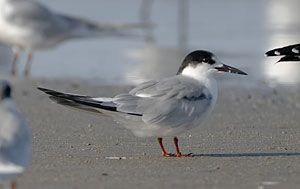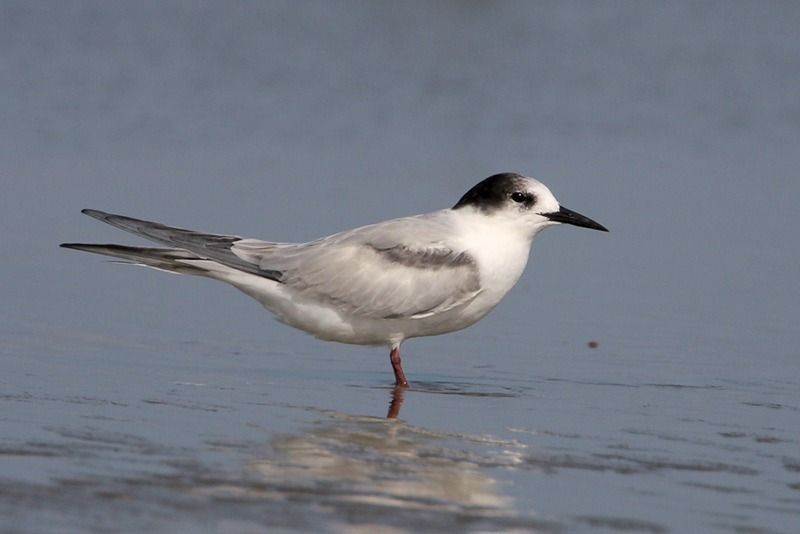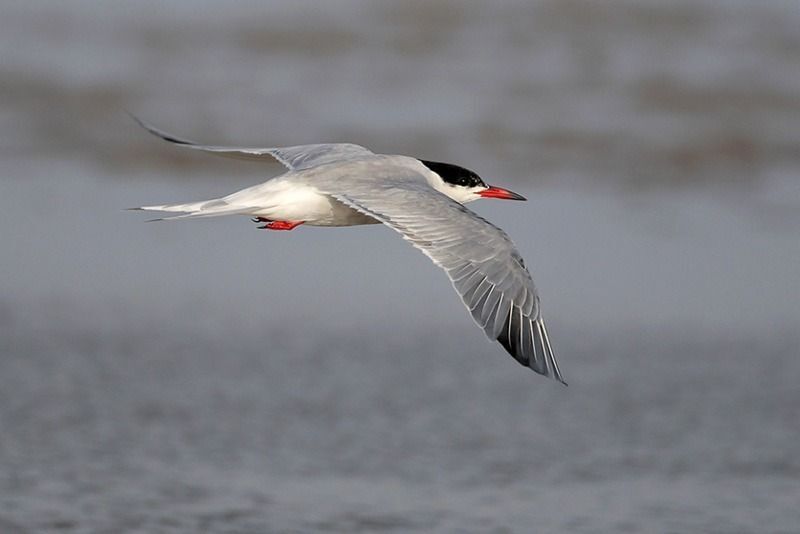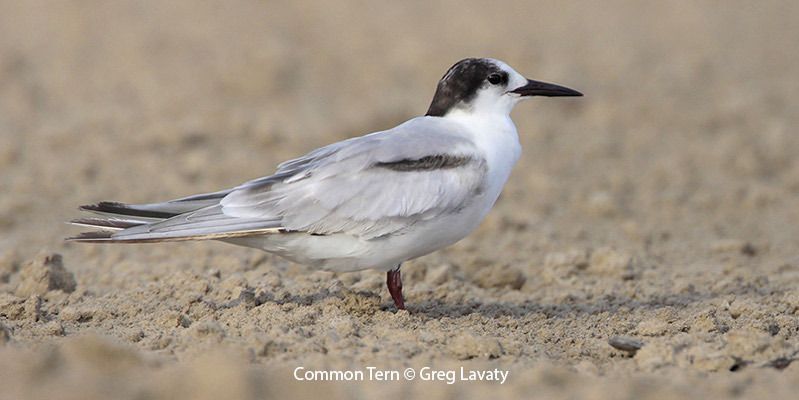
© David McDonald
Common Tern
Sterna hirundo
Family: (Laridae) Gulls and Terns
Preferred Habitat: Beaches and coastal marshes.
Seasonal Occurrence: Common spring through fall. Uncommon in winter.
Profile by Carrie Chapin: Common Terns are a fairly regular sight along the Upper Texas Coast as they migrate through in the spring and fall. Their numbers here peak in April and October, but a few individuals stick around during summer. One of the medium-sized terns, Common Terns are slightly larger than Least Terns and much smaller than Royal or Caspian Terns. Breeding adults are distinguished from very similar Forster’s Terns by the Common’s slightly shorter legs (giving a more squat appearance), wingtips the same length as the tail streamers when standing, a more reddish bill with a smaller black tip, darker outer primaries, and a slightly thinner bill base. Nonbreeding Common Terns retain a dark arc on their heads, while Forster’s Terns have two dark ear patches. Some standing birds also have a black swoosh on their wings, but this feature is less diagnostic, and birds should be identified using a combination of features. Some birds only seen at a glance are best left unidentified.
Common Terns nest in Canada, along the Great Lakes, and on the Atlantic coast from South Carolina to Canada. Nesting occurs in colonies near the water in areas with lots of gravel and plant material for cover. Groups perform flight displays before pairs break off. On the ground, the male presents the female with a fish, and they both help with nest construction. They make a small scrape in the ground, and the female lines it with dead vegetation, stones, plastic, and other materials close at hand. She lays one to four eggs and incubates them for about 24 days before hatching. The young are semi-precocial and leave the nest after a few days. The parents feed them until they can fly after 22-28 days. The young may stay with their parents for another two months.
Common Terns feed by plunge-diving in saltwater or freshwater. Fish, crustaceans, and mollusks make up the majority of their diet. Rats, American mink, gulls, and herons all predate nests. PCBs, DDT, lead, habitat degradation, and the hat trade of the late 1800s contributed to a steep decline in Common Tern populations to only a few thousand breeding pairs on the Atlantic coast. Currently, populations are relatively stable; however, the Great Lakes population continues to decline due to habitat alteration, disturbance, and many other factors.
Common Terns are found at the Bolivar Flats Shorebird Sanctuary and along the coast, often loafing with other terns on the beach. The next time you walk along the beach, be sure to bring your binoculars and take a good look at all the little terns!
-
Cornell Lab of Ornithology
-
Field Guide

© Greg Lavaty, www.texastargetbirds.com

© Greg Lavaty, www.texastargetbirds.com

© Greg Lavaty, www.texastargetbirds.com


